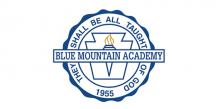Story by Tiffany Doss
Last week the USS Yorktown WWII aircraft carrier became the temporary residence for students from Potomac Conference's Desmond T. Doss Christian Academy in Lynchburg, Va. Seventh through 10th grade students spent three days and two nights on board the historic ship at the Charleston Harbor in South Carolina.






 Story by BMA Staff
Story by BMA Staff
 By V. Michelle Bernard / Photos by Pieter Damsteegt/NAD
By V. Michelle Bernard / Photos by Pieter Damsteegt/NAD



